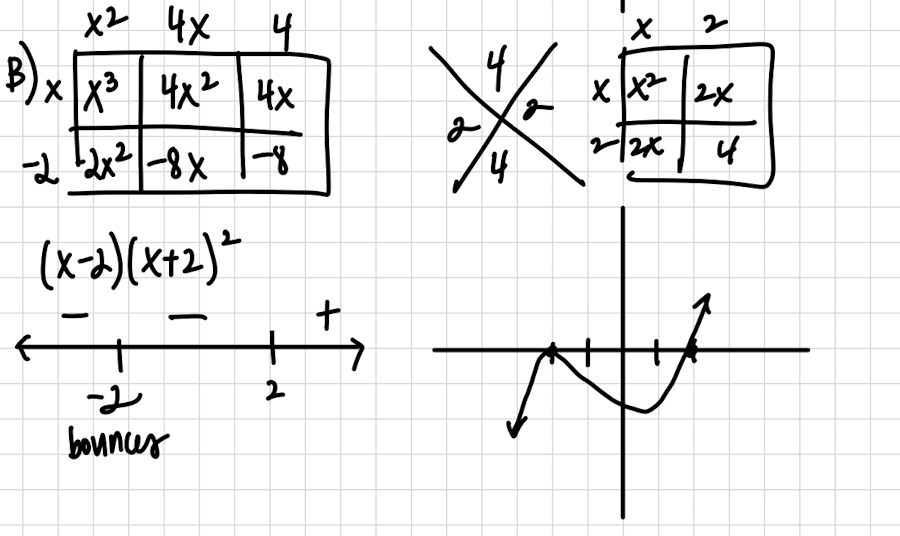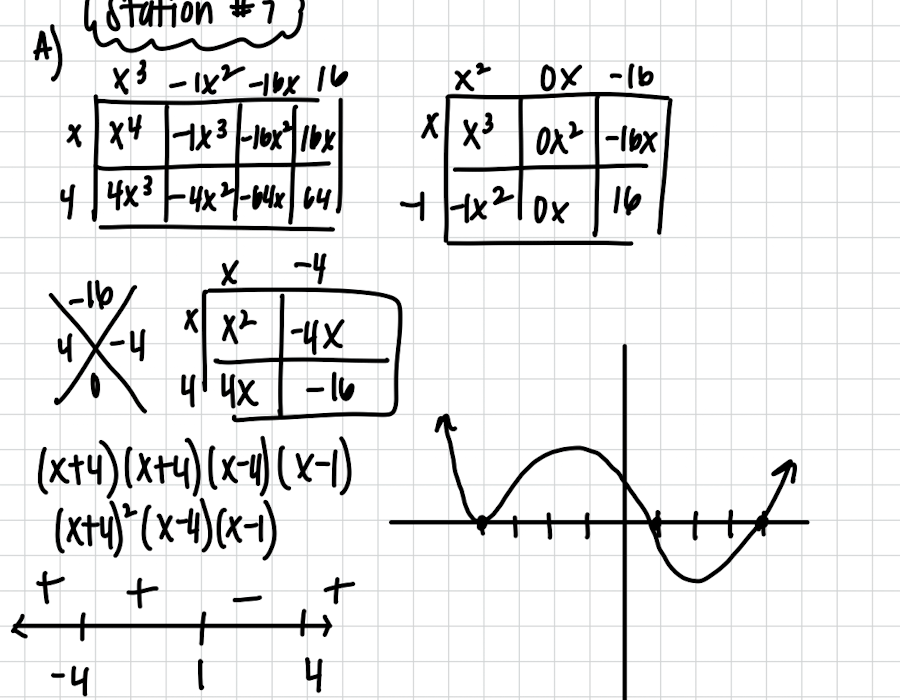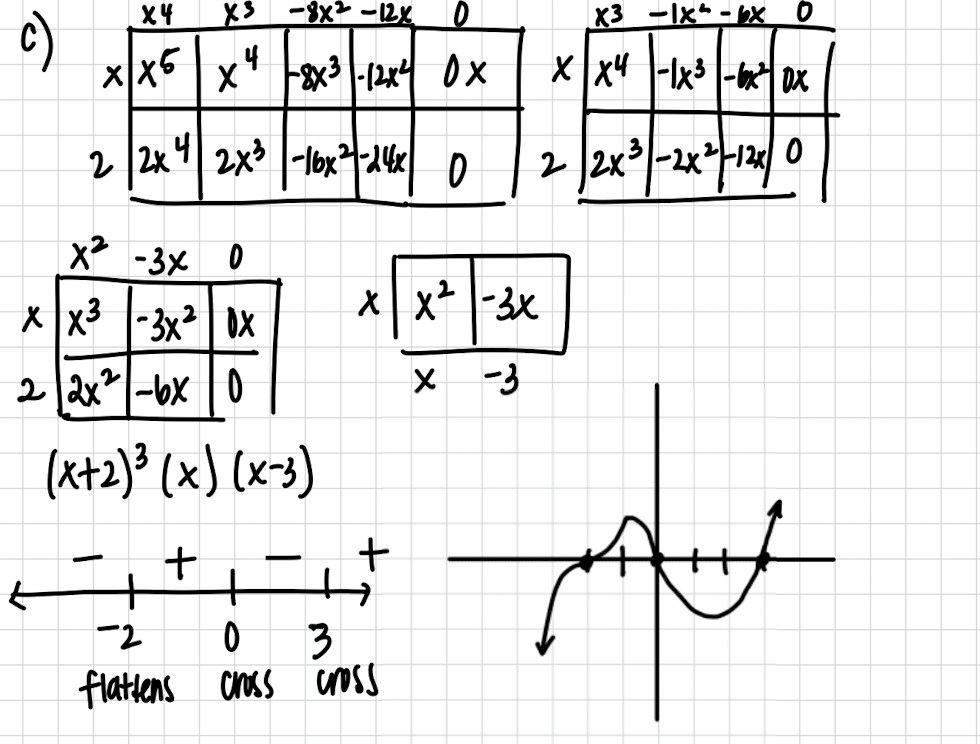Factor: 3x2 +11x +6
What is (3x+2)(x+3)
Divide:
(5x^3+12x^2-14x-15)/(x+3)
What is 5x2-3x-5
A polynomial that bounces at (4,0) and crosses at (2,0) and has an x-intercept of (0,-32)
What is: y = (x-4)2(x-2)
Rewrite into graphing form. Then determine the center & Radius:
x2+y2-6x-6y-63=0
What is: (x-3)2+(y-3)2= 81
C: (3,3)
R: 9
Dr. Rivera recorded 140 elk present in a population. Assuming the population of elk grows at a rate of 5% per year, write an exponential equation that would model this situation.
What is: y = 140(1.05)x
|-8x-4|+5=25
x= -3 and x = 2
Factor: 2x2-5x-3
What is: (2x+1)(x-3)
Divide:
(7x^3+29x^2+16x-24)/(x+3)
What is: 7x2+8x-8
Write a polynomial equation:
A polynomial with an x intercept that crosses at (-3,0), bounces at (2,0) and has a y intercept of (0,24)
What is: Y = 2(x+3)(x-2)2
Rewrite into graphing form then determine the center & Radius
x2+y2+18x-20y+145=0
What is: (x+9)2-(y-10)2= 36
C: (-9,10)
R: 6
In a census, Wallford Village had a population of 360. Assuming the population decays at a rate of 2% per year, write an exponential equation that would model this situation.
What is: y = 360(0.98)x
Solve, leave in exact for (log form)
7^(x+2)=11
What is:
(log11)/(log7) -2
Factor: 5x2+7x-6
What is: (5x-3)(x+2)
Divide:
(6x^3+9x^2-8x-2)/(x+2)
What is:
6x^2-3x-2+2/(x+2)
Write a polynomial equation, assume the y-intercept is (0,-5)
What is:
Rewrite into graphing form, then determine the center & radius
x2+y2-16x-24y+127 = 0
What is: (x-8)2+(y-12)2= 81
C: (8,12)
R: 9
An exponential function that passes through the points (1,7) and (2,19)
What is:
y = (49/19)(19/7)^x
Solve, leave in exact form.
e^(-6x)=964
What is
x= ln964/-6
Completely Factor and Graph: y = x3+2x2-4x-8; Given a root at x= 2
What is: 
Factor: 8x2-14x+5
What is: (2x-1)(4x-5)
Divide:
(5x^3+6x^2-6x-13)/(x+1)
What is:
5x^2+x-7-6/(x+1)
Write a polynomial equation for the graph below. Assume that it also passes through the point (9,1.25)
What is:
y = 0.05(x-4)^2(x-8)^3
Rewrite into graphing form, then determine the vertex.
y = 2x2+4x+5
What is: y= 2(x+1)2+3
V: (-1,3)
An exponential function that passes through the points (2,21) and (4,81) and has an asymptote of y = 1
What is: y = 5(2)x+1
Solve: leave in exact form.
-337(2)^(2x)=-7
What is:
x = log(7/337)/log2/2
Completely Factor & Graph: x4+3x3-20x2-48x+64; Given roots at x = -4 and x = -1

Factor: 4x3+12x2+9x
What is: x(2x+3)2
Divide:
(4x^3+2x^2-6x-8)/(2x+4)
What is:
2x^2-3x+3-20/(2x+4)
Rewrite into graphing form, then determine the vertex
y = -3x2-18x-32
What is: y = -3(x+3)2-5
V: (-3, -5)
An exponential function that passes through the points (-1,1) and (3, -159) and has an asymptote of y = 3
What is: y = (-6)(3)x+3
Solve.
square root 2 (2x+6) = 2x+4
What is x = -1
x = -5/2; Extraneous Solution.
Completely Factor & Graph: y = x5+3x4-6x3-28x2-24x; Given a triple root at x= -2
